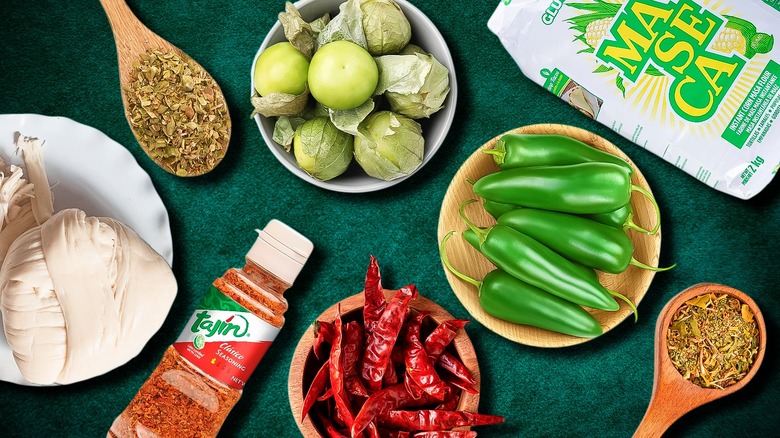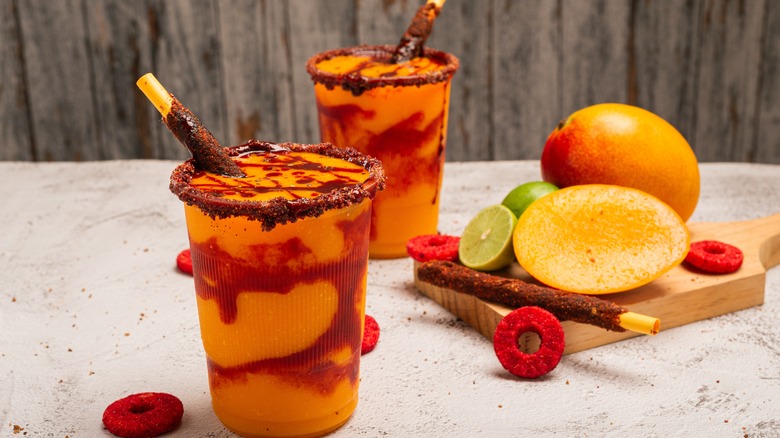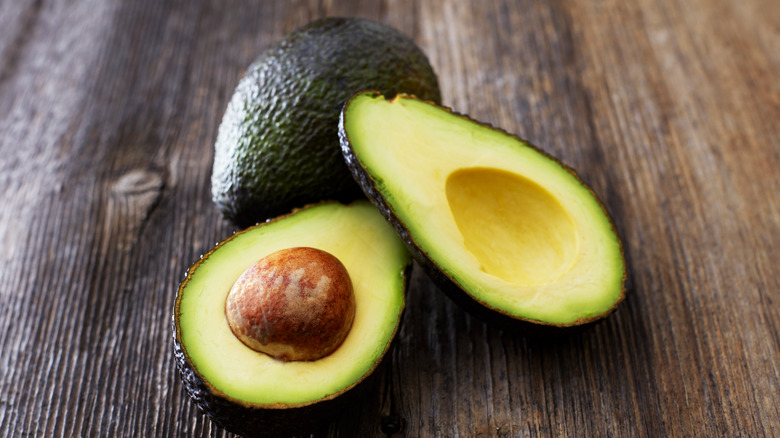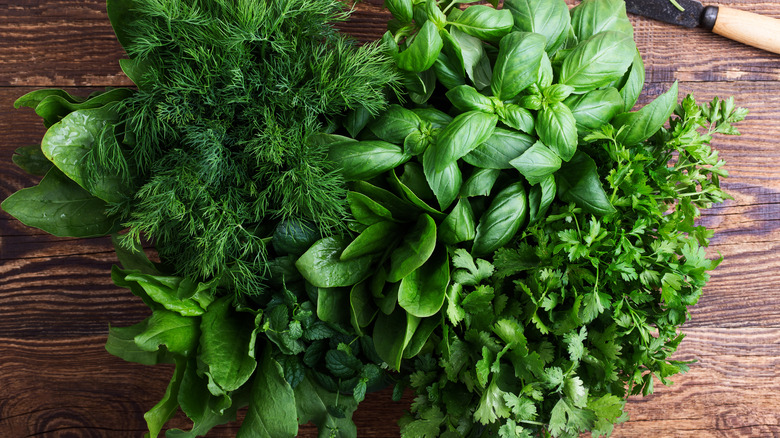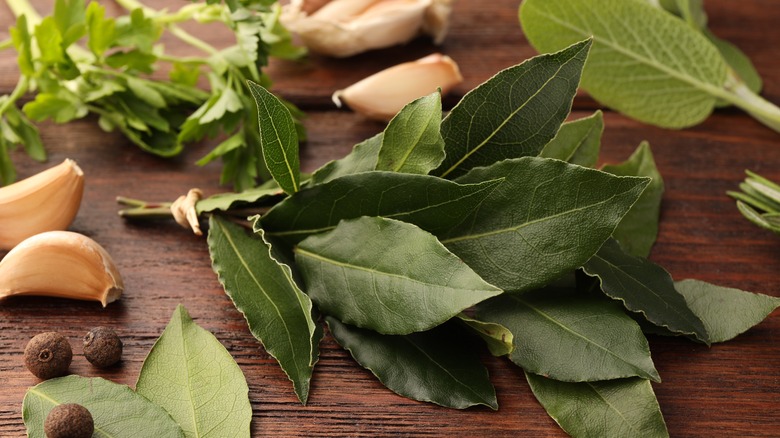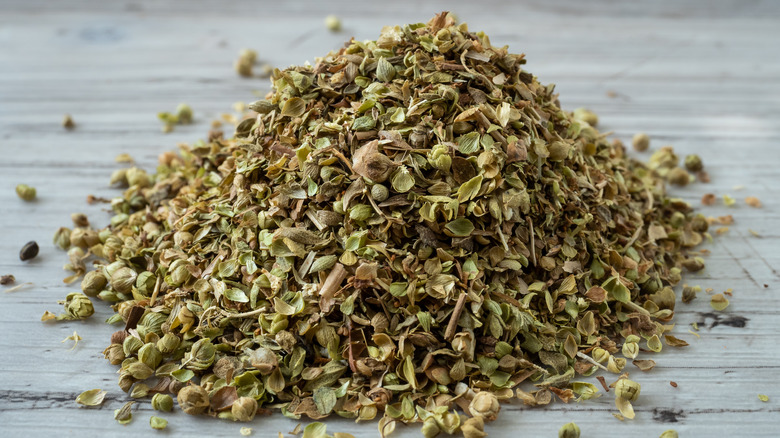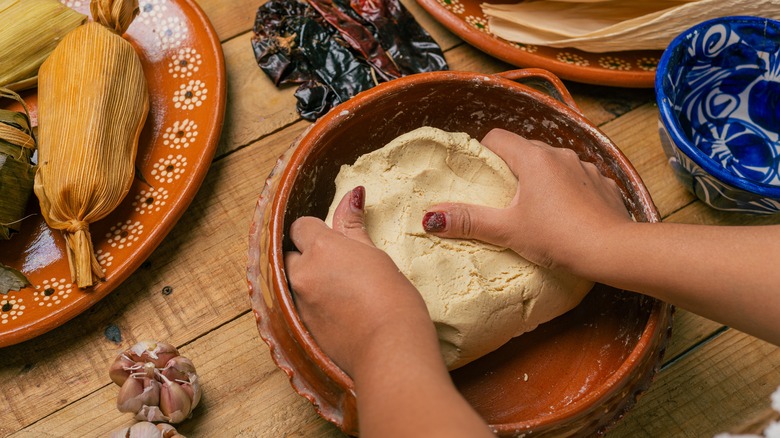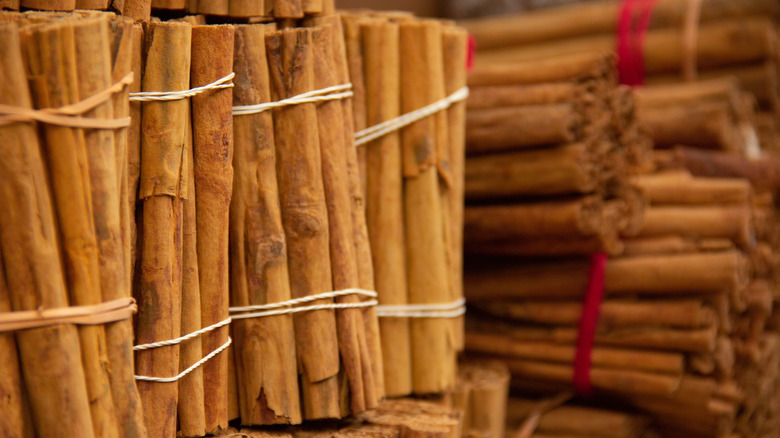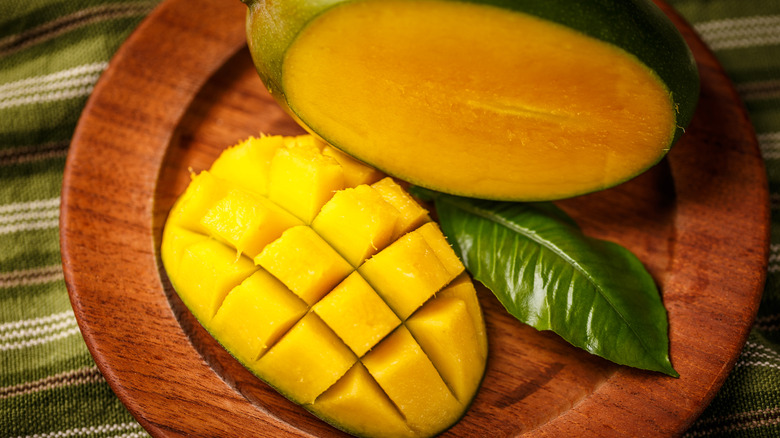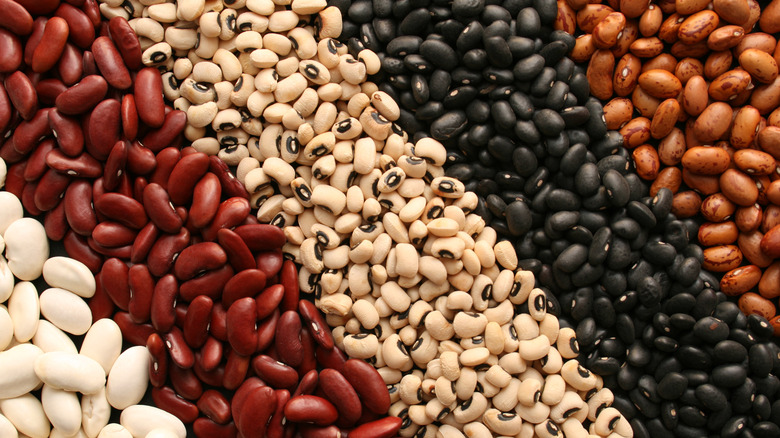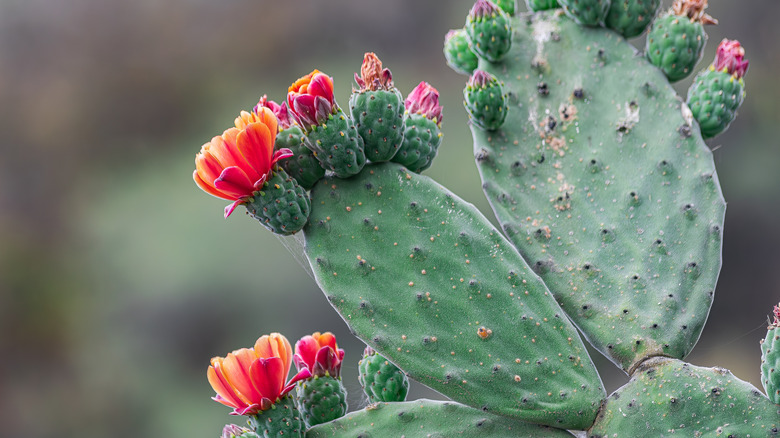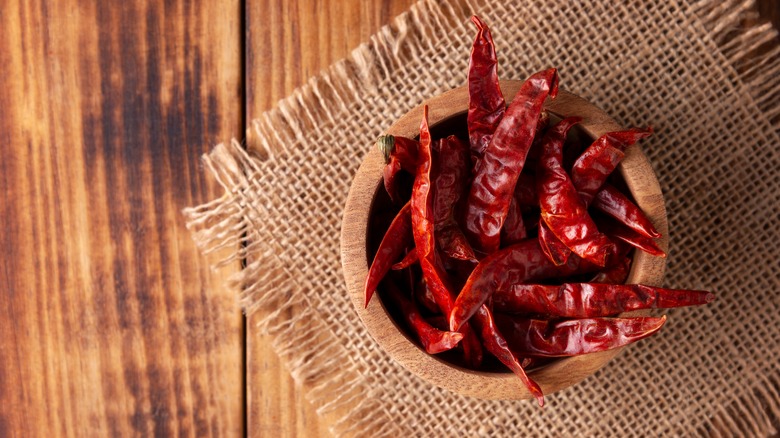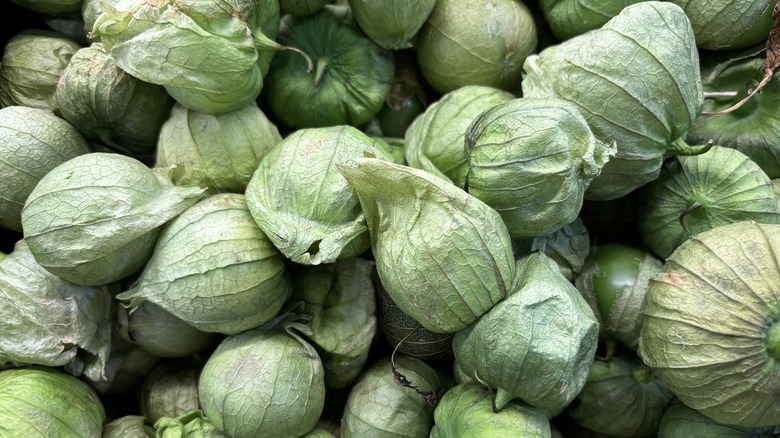The 14 Ingredients You Need For Really Good Mexican Food, According To Chefs
For many Americans, regardless of background, Mexican food is comfort food –- a basket of warm tortilla chips and salsa feels as familiar and welcoming as a childhood dinner prepared by Mom. And while we love going to our favorite Mexican restaurants when a craving for carnitas or chiles rellenos or birria hits, the idea of trying to replicate our favorite dishes at home can be intimidating -– what secret ingredients do our favorite restaurants use to make their food so tasty, and how should they be used? No wonder so many of us limit our home-cooked Mexican dinners to boxed taco kits and the occasional bowl of queso.
It doesn't have to be that way. To understand the unique flavor profiles and defining ingredients of Mexican cooking, we need to understand their origins: Mexico's cooking and its ingredients, like the rest of its culture, represent a blend of indigenous American and Spanish influences. "Each of these ingredients not only adds flavor but also tells a story of tradition and culture, turning every dish into a celebration of Mexico's rich culinary heritage," explained Carlos Gaytán, the first Mexican-born chef to earn a Michelin star and the owner of several critically acclaimed restaurants in both Mexico and the U.S.
To guide you on your cooking journey, we've asked Gaytán and six of his colleagues, all known for their passion and expertise in Mexican cooking, for their lists of essential ingredients you need to make great Mexican dishes at home.
Chamoy and Tajín
Lovers of Mexican food enjoy it for its punchy, exuberant flavors. And when Mexican cooks want a quick way to add spice and tang to dishes, they turn to two favorite pantry staples: chamoy (a flavorful sauce of fruit, chiles, salt, and lime juice) and Tajín (the brand name for a spicy dry condiment of salt, chiles, and lime). Both are popular toppings for sliced fresh fruit, and chamoy is so beloved it's even made into a sweet-salty candy.
Professional chefs also use these condiments to add both flavor and visual appeal to their dishes –- their warm red hue adds an attractive bit of color that matches their spicy flavor. "Add on the rims of alcoholic and nonalcoholic drinks," suggested Raul Luis, chef at Birrieria Chalio in Fort Worth, Texas. Luis also shared that these condiments make good garnishes for salad plates and are an easy way to elevate plain fruits and vegetables other than the mangos and watermelon we typically see. "To enhance flavors, sprinkle a little on oranges and cucumbers," he said. He also said they're great additions to seafood dishes, such as Baja fish tacos.
Avocados
Smooth, creamy avocados are another favorite in the Mexican kitchen and a great counterpart to the spicier food on the table. "They're not only native to Mexico, but they're an iconic Mexican food and emblematic of Mexican cuisine," said Pati Jinich, a James Beard and Emmy-Award-winning chef and TV host, and ambassador for Avocados from Mexico, a nonprofit marketing organization. "No matter what part or region of Mexico –- from Yucatan to Mexico City to Northern Mexico –- [they] all have avocados as an essential ingredient from toppings to salads, and of course, versions of guacamole [are] served everywhere in the country," she said.
One of Jinich's favorite ways to enjoy avocados is as a dinner starter. "I grew up eating hearts of palm in halved avocados with my mom for special occasions," she said. "For dinner parties, it is an elegant dish to begin with, perhaps topped with a crab, shrimp, or artichoke heart salad." She also recommends mixing up your guacamole game with a novel choice of chiles and other flavorings. "I love playing with mixing chiles in my guacamole, like combining dried chiles, say chile de árbol, and a fresh one like jalapeño or maybe add a little bit of chipotle in adobo sauce," she said.
Fresh herbs
You might not know it from looking at a typical fast-casual Mexican combination plate, but fresh herbs are essential in traditional Mexican cooking. Besides the cilantro we typically see in salsa, Carlos Gaytán said other familiar herbs play bigger roles than you may think. "Dill pairs wonderfully with seafood, basil enhances the freshness of any dish, mint adds a cool note to drinks and desserts, and parsley is perfect for finishing touches," he said. "Additionally, fresh thyme brings an earthy aroma to roasted meats and vegetables."
If you're interested in a deeper dive into traditional Mexican herbs and have a well-stocked Mexican market near you, there are plenty of other options to explore. Epazote, Gaytán said, is a traditional seasoning for black beans, and according to Pati Jinich, it is a great alternative for those who can't tolerate cilantro. "I think epazote is a great way to skip cilantro and add fragrance," she said. Gaytán also recommends hoja santa, an herb commonly used in the state of Oaxaca. "It has a unique flavor reminiscent of anise and black pepper and is used to flavor tamales, quesadillas, soups, and stews."
Bay leaves
Besides fresh herbs, dried herbs also play important roles in Mexican dishes. Among these are bay leaves, which are simmered whole in dishes and removed before serving. Their cool, menthol-like flavor and aroma balance out strong flavors in cooked dishes. "Used in soup stocks [and] stews, bay leaf helps reduce gaminess odors that are created by ingredients," said Raul Luis. "For example, it will help reduce the fishy smell from seafood."
While the bay laurel plant is native to the Mediterranean and its leaves have long been used in European cooking, the bay leaves used in Mexican cooking come from a related native plant, sometimes called false laurel or mountain laurel to distinguish it from its Mediterranean counterpart. Mexican bay leaves were used in cooking and for medicinal purposes by indigenous people well before European contact and have a similar flavor to bay laurel, although milder and less pungent. Mexican bay leaves can be found at specialty stores and in standard supermarkets.
Oregano
Oregano isn't just for pizza and spaghetti sauce –- it's also a useful ingredient in Mexican cooking. "[It's' great for salsas and compliments laurel [bay leaves] to help reduce odors from the cooking process," said Raul Luis. "[It] enhances flavor profiles." Carlos Gaytán agrees. "Mexican oregano has a pungent flavor that enhances meat, beans, and sauces," he said.
It's important to note, however, that the oregano used in Mexican cooking is distinct from the more familiar type seen in Italian cuisine. Mexican oregano, which is native to Mexico, comes from a plant unrelated to Mediterranean oregano. It's more closely related to lemon verbena and also has a different flavor: it's less bitter than Mediterranean oregano with citrusy notes and a hint of licorice. Its powerful flavor enables it to enhance hearty dishes such as soups and stewed beans without overwhelming them. It's also used as a table condiment that diners can use to flavor dishes to their taste.
Masa harina
Few ingredients are more representative of Mexican cuisine than masa harina, the processed corn flour used to make everything from tortillas to tamales. If you went to a stateside Mexican restaurant, started your meal with some chips and salsa, then moved on to enjoy a combination plate with a taco, an enchilada, and a tamale, you've experienced masa harina in four different guises. For this reason, Alex Henry, chef at El Molino del Sureste in St. Louis, Missouri, calls masa harina one of the "must haves...if folks are trying to get into Mexican cooking," and Carlos Gaytán considers it "another fundamental ingredient" in the Mexican kitchen.
One reason masa harina has such deep resonance for Mexican cooks is its long history in Mexican cooking. Indigenous people in Mexico and Central America developed nixtamalization –- the process of treating dried corn with an alkaline solution to soften it and unlock its nutrients -– as early as 1200 B.C. It is this process that distinguishes masa harina from regular cornmeal and gives corn tortillas and other dishes their distinctive flavor. It's also a visible reminder that indigenous Mexican cooking techniques are still alive and well in modern kitchens.
Cinnamon
Mexican cuisine has a rich inventory of sweet as well as savory dishes, and for the former, a common and much-loved flavoring is cinnamon. "Cinnamon is a must. [It] compliments coffees, agua frescas [fresh fruit drinks], and Mexican desserts," Raul Luis said. It also lends its distinctive flavor to main course dishes. "Cinnamon and clove bring warmth and spice to both savory dishes and desserts, [and is] essential in mole sauces and spiced drinks," Carlos Gaytán said.
If you're aiming for truly authentic flavors, however, don't just reach for that jar of cinnamon or cinnamon sticks you picked up at the supermarket a while back. Mexican cooks prefer Ceylon cinnamon (also called true cinnamon or Mexican cinnamon), which has a softer, fruitier flavor than the more common cassia cinnamon found in the U.S. It's also less hot and peppery than cassia cinnamon. While supermarket cinnamon will do in a pinch, in preparations where the cinnamon flavor is prominent (such as in this Mexican-inspired tres leche rice pudding), a trip to your local Mexican market (or online spice merchant) may be well worth the trouble. "Be sure to use Ceylon cinnamon (a.k.a. real cinnamon)," Arturo Enciso, founder of Gusto Bread, an artisanal Mexican bakery in Long Beach, California, said. "[It] will make a world of difference in your baked goods."
Mangos
Mexico's warm climate is a haven for tropical fruit trees, and sweet, colorful mangos have long been a favorite on the Mexican table as well as a common street snack. And their uses aren't just limited to simple fruit salads either. Mexican cooks know how to incorporate them into both sweet and savory dishes. "Mango can be used to make agua frescas, alcoholic beverage garnishments, hot salsas, and [to] enhance ceviche flavors," Raul Luis said.
Purists, however, love Mexican mangoes best when they're plucked from the tree and eaten out of hand. Mangoes grown in different parts of Mexico come into season at different times, but in general, the season for Mexican mangoes runs from March through September. And if you can't wait for your mangoes to ripen, no worries: Mexican cooks also incorporate unripe fruit (which is firmer and less sweet) into tasty salads and other dishes. Iliana de la Vega, chef and CEO of El Naranjo in Austin, Texas, loves to keep "any kind –- ripe or unripe" in her kitchen during mango season.
Dried beans
Spend any time in the less-touristy parts of Mexico, and there's a good chance you'll see beans on your plate three times a day, as a side to accompany creamy breakfast eggs or lunchtime steak, and tucked into tacos or a burrito for dinner. Inexpensive, nutritious, and delicious, dried beans have become a staple in Mexican kitchens for good reason. "As my mom would always say, if you have frijoles, you have a meal," cookbook author and blogger Yvette Marquez-Sharpnack said. Her go-to choice is pinto beans, which she says can be easily prepared in an instant pot. Pati Jinich shares Marquez-Sharpnack's love for beans. "I'd be remiss to not mention how important beans are in Mexican cooking. I love cooking my own beans –- whether pinto, black, or white. We can't live without them and eat them in my house every day."
Beans take many forms in the Mexican kitchen, from simmered frijoles de olla to the familiar refried beans to appearances in soups and stews. And the experts agree that the extra time needed to soak and cook dried beans is worth it. "I keep a can of black or pinto beans for emergencies, but I always prefer to cook my own frijoles," Iliana de la Vega said.
Nopales
Mexican cooks, like creative cooks everywhere, know how to take unassuming local ingredients and turn them into craveable treats. "Mexico has been pretty well populated for several millennia, and in that time, many people have discovered just about everything that is edible and put it to some exquisite uses that number far more than any one person could ever know," Alex Henry said. Case in point is an iconic Mexican ingredient that many outsiders might overlook as a possible food source: nopales, or the paddles of the prickly pear cactus.
Yes, they've got spines –- but these are easy to trim off with a kitchen knife (to protect your fingers, hold paddles in a towel while working with them). The succulent paddles taste a bit like green beans and can be enjoyed raw or cooked. "Dry roast [nopales] in a skillet or in the oven, then prepare a salad," recommended Iliana de la Vega. Besides being a great focal point for salads, they add visual appeal as well as flavor. "When combined with cilantro, they radiate a chlorophyll that looks very appetizing, especially with green salsas and stews," Raul Luis said.
Chiles
If any single ingredient characterizes Mexican cuisine in the American mind, it's chiles. "No ingredient is more fundamental to Mexican food than the colorful chile," Yvette Marquez-Sharpnack said. "Chiles are a versatile fruit that comes in a wide variety of shapes, colors, sizes, and 'heat.' They can be prepared in myriad ways: roasted, fried, boiled, grilled, and fresh."
The good news is authentic Mexican chiles have become easier for American cooks to access. "Increasingly, you find more kinds of chiles in the U.S." Pati Jinich said. "For example, not only can you find jalapeños, but you can also now find the fruity and feisty manzanos as well as the citrusy and bright habaneros." Dried and pickled chiles are also must-haves for Jinich. "From chocolaty ancho chiles to cherry-like guajilloes, to smoky chiles de árbol and spicy chipotles, now you have more ingredients to add to your tool kit," she added.
When buying fresh chiles, she advised: "Make sure the stem is not limp and the skin is not wrinkled. It should be firm when you hold it and the color should be bright." In addition, she shared that dried chiles should be wrinkled and soft, not brittle. Raul Luis added that even dried chilis should look fresh and vibrant. "Look for vividness in chile, and stay away from those that seem as if a powder were sprinkled on them," he said.
Tomatillos
If you're a fan of chile verde and tangy green sauce on your enchiladas, you need to make friends with the tomatillo, another iconic Mexican ingredient. Like tomatoes, the tart green fruit are members of the nightshade family, but are more closely related to gooseberries. Yvette Marquez-Sharpnack uses them in a number of colorful dishes, including chilaquiles verdes (fried tortilla strips in tomatillo sauce topped with queso fresco and crema) and posole verde (a soupy stew featuring hominy in a tomatillo-laced broth). Iliana de la Vega likes to flavor her tomatillo salsa with pasilla mixe, a native chile of Oaxaca.
A distinctive feature of fresh tomatillos is that each firm, green fruit comes covered in a papery husk. When shopping for tomatillos, look for plump fruit with snugly-fitting husks, and don't be afraid to peek under them to ensure the fruit is firm and undamaged. To prepare tomatillos for cooking, peel off the husks and rinse the fruit to remove the sticky residue on the skin.
Mexican cheeses
Mexican cheeses are far more diverse than many diners realize, and can take forms from dry and crumbly to soft and stretchy. Among the more commonly encountered varieties of Mexican cheese are queso fresco (a mild, crumbly white cheese), queso cotija (a tangy, salty dry cheese), and queso Oaxaca (a mild, meltable form of string cheese). In Mexico, cooks use cheese as a garnish or incorporate it into cooked dishes — Carlos Gaytán likes to use it to stuff squash blossoms — rather than serve it on its own.
Compared with indigenous ingredients such as cactus paddles, cheese has a relatively short history in Mexican cooking. It arrived with Spanish settlers, who introduced dairy animals such as cows and sheep to the Americas. The first Mexican cheeses, which emerged in the mid-19th century, were simple fresh cheeses intended to be eaten within a few days of production. In the days before refrigeration, this was the only option in Mexico's warm climate. Even today, Mexican cheeses stay close to their rustic roots: half of the country's cheeses are still made at home or on farmsteads. To find high-quality Mexican cheese in the U.S., seek out specialists with roots in Mexico.
Crema Mexicana
Crema Mexicana –- a tangy, pourable dairy product resembling a thinner version of sour cream or a tangier, saltier version of crème fraiche –- is another useful ingredient to keep around when making Mexican meals. While you can find jarred versions of crema Mexicana in specialty markets, you can also make your own. Yvette Marquez-Sharpnack makes her version with a mixture of heavy cream, sour cream, and a touch of lime juice and salt. Besides using it as a topping for tacos and potatoes, she mixes it with other ingredients to make quick sauces. For example, she swirls it into mashed avocados for a creamy salsa and blends it with chopped chipotles en adobo (pickled chipotle peppers) for a condiment that's both creamy and spicy.
Its mild tang also makes it a great complement to desserts. Like crème fraiche, it's tasty poured over berries. And to make a homey, hearty dessert, Iliana de la Vega recommends crema Mexicana as a topping for fried ripe plantains. "Fry [plantains] and serve as dessert with crema Mexicana and sugar, cajeta (sweetened caramelized goat's milk), or condensed milk," she suggested.
